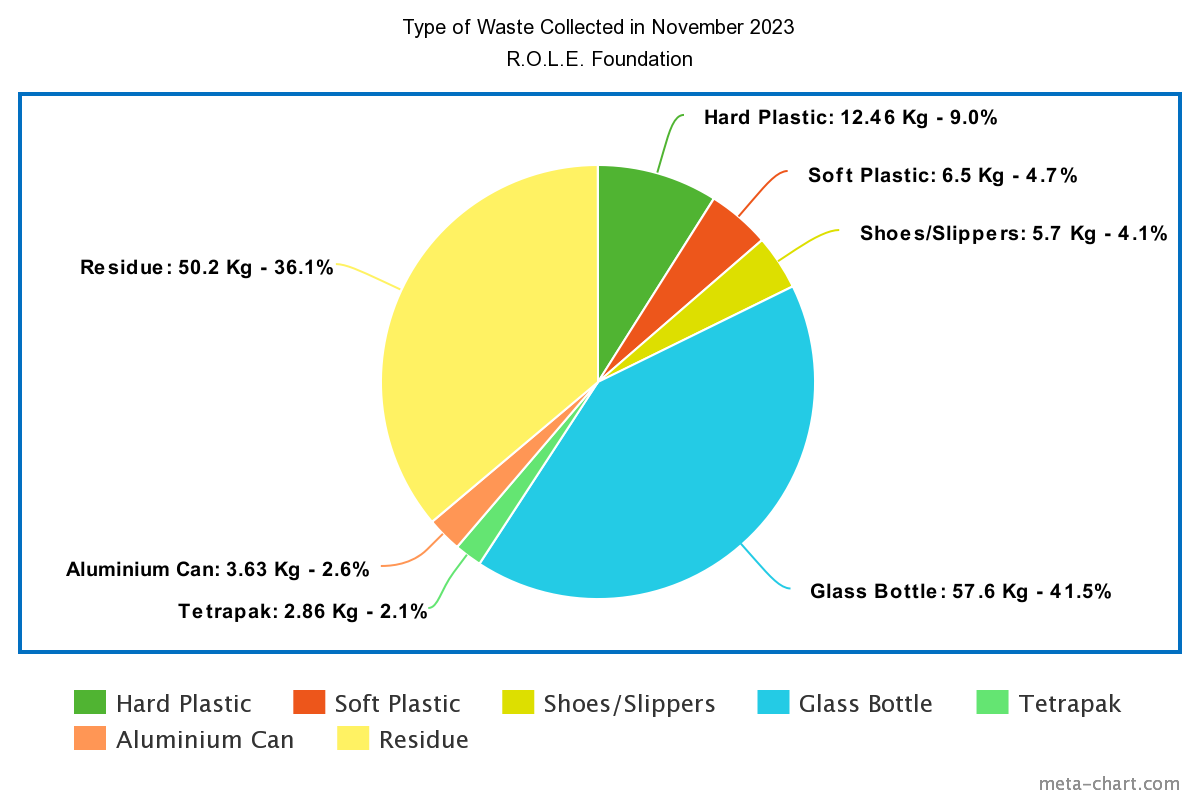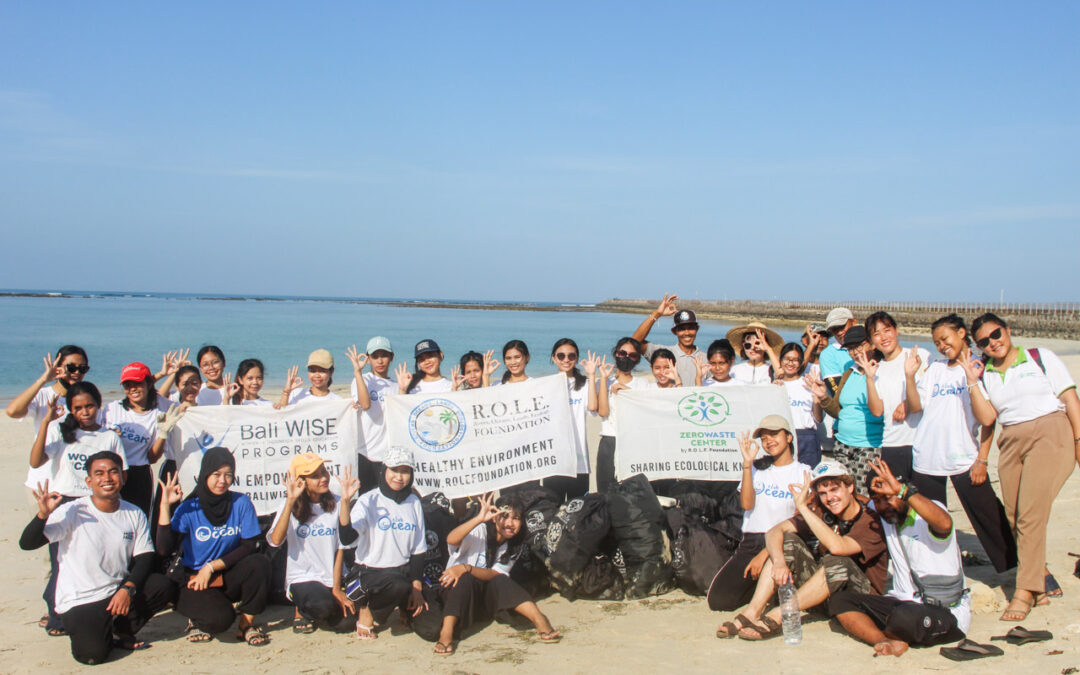Tuban Beach served as the chosen venue for the Beach Cleanup event held on Saturday, November 18, 2023. The objective of this event was to raise public awareness about the perils of marine debris and advocate for the importance of maintaining cleanliness on the beach. As a popular spot for both local and international tourists to relish the sunset, Tuban Beach often falls victim to litter left behind by visitors who neglect to dispose of their waste properly. This prevailing issue prompted the selection of Tuban Beach for the Beach Cleanup event in November. A total of 32 participants, comprising R.O.L.E Foundation staff, Bali WISE students, and volunteers, collaborated to collect 138.95 kg of non-organic waste. The collected waste will undergo a thorough sorting process at the ZeroWaste Center.
Location and Condition of the Beach

Situated in close proximity to the airport’s southern landing area, Tuban Beach has evolved into a sought-after tourism destination, attracting both domestic and international visitors. It serves as a tranquil setting where young people spend leisure time with family and friends, enjoying the scenic sunset. Despite its popularity, the beach lacks proper waste disposal facilities, leading individuals to dispose of their waste in various corners. In response, a collaborative effort with an elementary school was initiated to conduct a beach cleanup, aiming to illustrate the adverse consequences of environmental negligence. The objective is to foster an understanding of responsible waste management, emphasizing the need for clean beaches that bolster the tourism sector and address environmental challenges linked to waste.
Waste Collection and Separation

The Beach Cleanup at Tuban Beach yielded a collection of 138.95 kg of non-organic waste. The accompanying pie chart highlights the dominance of glass bottles, constituting approximately 40% of the total waste. Beer bottles were notably prevalent, often concealed in the grass and under trees. Residue, totaling around 50 kg, held a substantial percentage among other waste categories. The presence of scattered styrofoam, broken into small pieces, is particularly concerning due to its potential environmental contamination. Hard plastics, including plastic glass bottles and cups, accounted for 12% of the total waste. Soft plastics, such as laminated and colored plastic, constituted 4.7% of the collected waste. Shoes and slippers contributed 4%, while aluminum cans and Tetrapak were the minority constituents in this waste collection, each comprising a 1% share.


Recent Comments